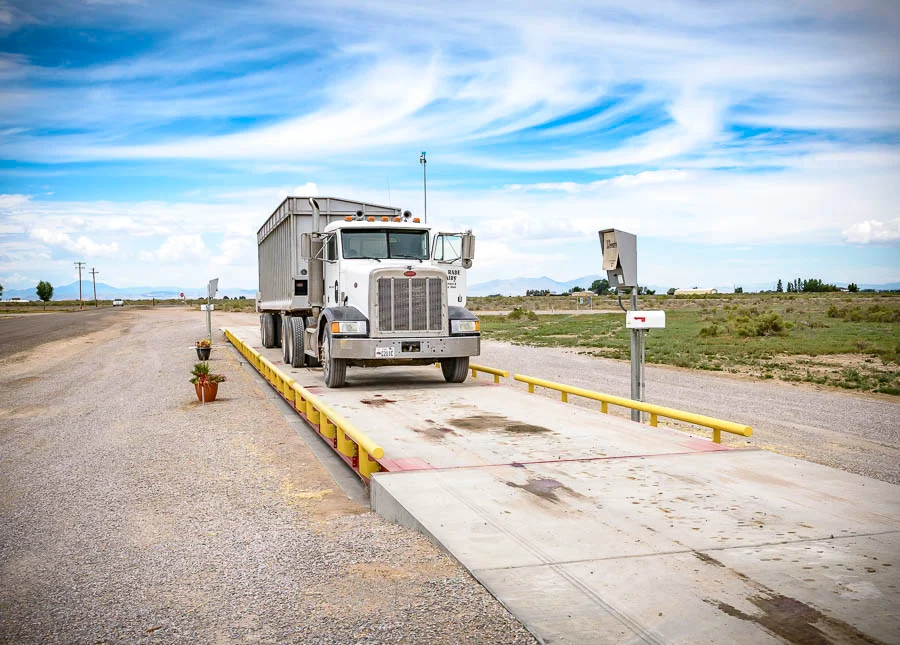
Here are the top 17 key points on how truck scales operate and measure the weight of vehicles. - from load cells and weighing mechanisms to safety guidelines and legal compliance:
- Weighing Mechanism: Various weighing mechanisms, including strain gauge load cells and weighbridge structures, are utilized by truck scales to accurately measure the weight of vehicles.
- Load Cells: Load cells are sensors placed strategically under the scale platform or weighbridge. These cells detect the weight applied to them and convert it into an electrical signal.
- Weighbridge Structure: Weighbridges are large platforms with numerous load cells positioned at specific locations. The vehicle being weighed drives onto the weighbridge, and the force exerted at those points is measured by the load cells.
- Weight Distribution: Load cells measure the vertical force exerted on them by the vehicle's weight. This information is used to calculate the total weight and the weight distribution across multiple axles.
- Electronic Signals: The electrical signals produced by the load cells are transmitted to a junction box or digital indicator, which converts the signals into readable weight measurements.
- Summing Signals: In multi-load-cell systems, the individual load cell signals are summed to provide the total weight of the vehicle.
- Calibration: Regular calibration of truck scales is necessary to ensure accuracy. Using known weights, calibration involves modifying the scale's sensitivity and precision.
- Digital Readout: The converted weight data is displayed on a digital readout or an electronic display, providing an easily readable weight measurement to the operator.
- Software Integration: Numerous contemporary vehicle scales are outfitted with software interfaces that permit the recording, storage, and analysis of data. This may involve the issuance of weight receipts or the transmission of data to central systems.
- Weight Limits: Truck scales often have preset weight limits, and if a vehicle exceeds these limits, warnings can be generated to prevent overloading and ensure safety.
- Dynamic Weighing: Some truck scales are designed for dynamic weighing, which allows moving vehicles to be weighed. This is notably beneficial for applications such as highway weigh-in-motion stations.
- Axle Weighing: Truck scales can also measure the weight of individual axles or groups of axles. This is useful for checking compliance with axle load regulations.
- Portable Scales: Portable truck scales that can be transported and set up in various locations are also available. Typically employed for impermanent weighing requirements.
- Environmental Considerations: Truck scales are built to withstand harsh conditions and environmental factors like temperature fluctuations, moisture, and heavy usage.
- Maintenance: Regular maintenance is crucial to ensure the accuracy and functionality of truck scales. This includes cleaning, inspection of load cells, and addressing any wear and tear.
- Legal Compliance: Many truck scales are subject to legal regulations regarding accuracy and calibration. Compliance with these regulations is essential for fair trade and road safety.
- Safety: Proper installation and use of truck scales are essential for operator safety. Clear guidelines should be followed to prevent accidents during the weighing process.
These bullet points provide a concise overview of how truck scales operate and measure the weight of vehicles.
